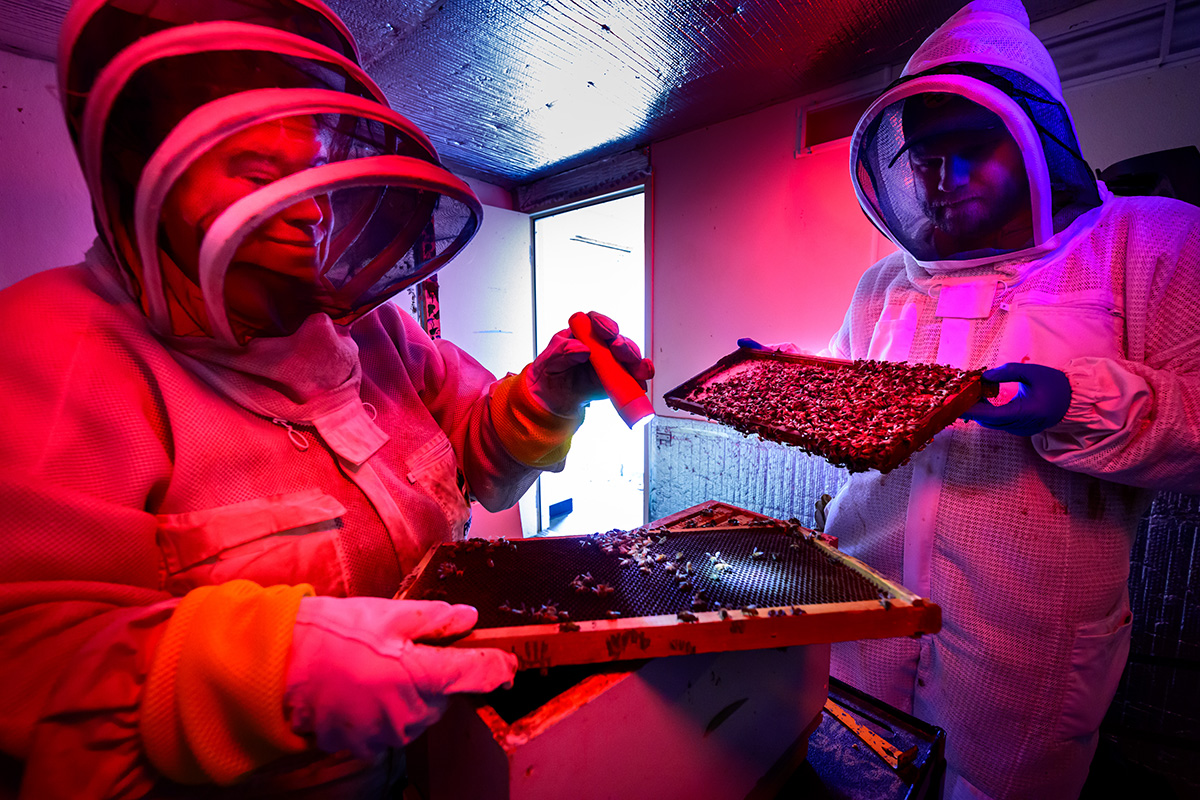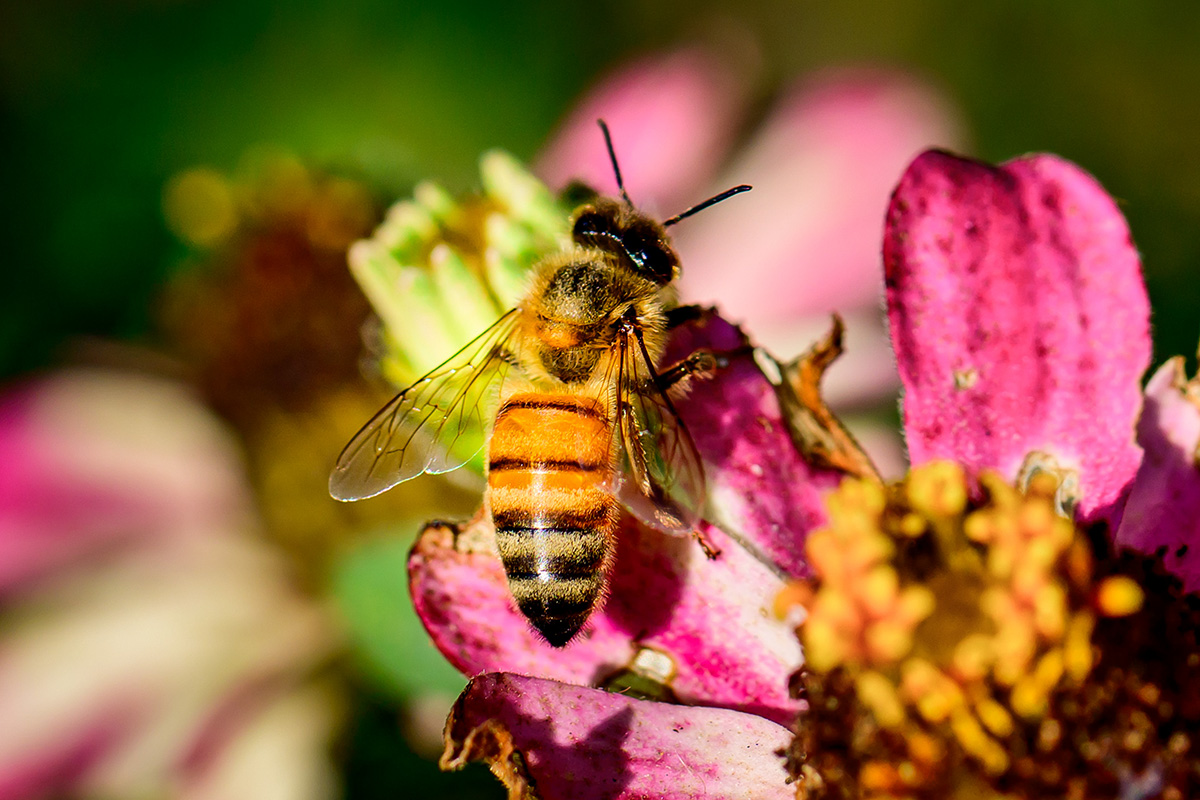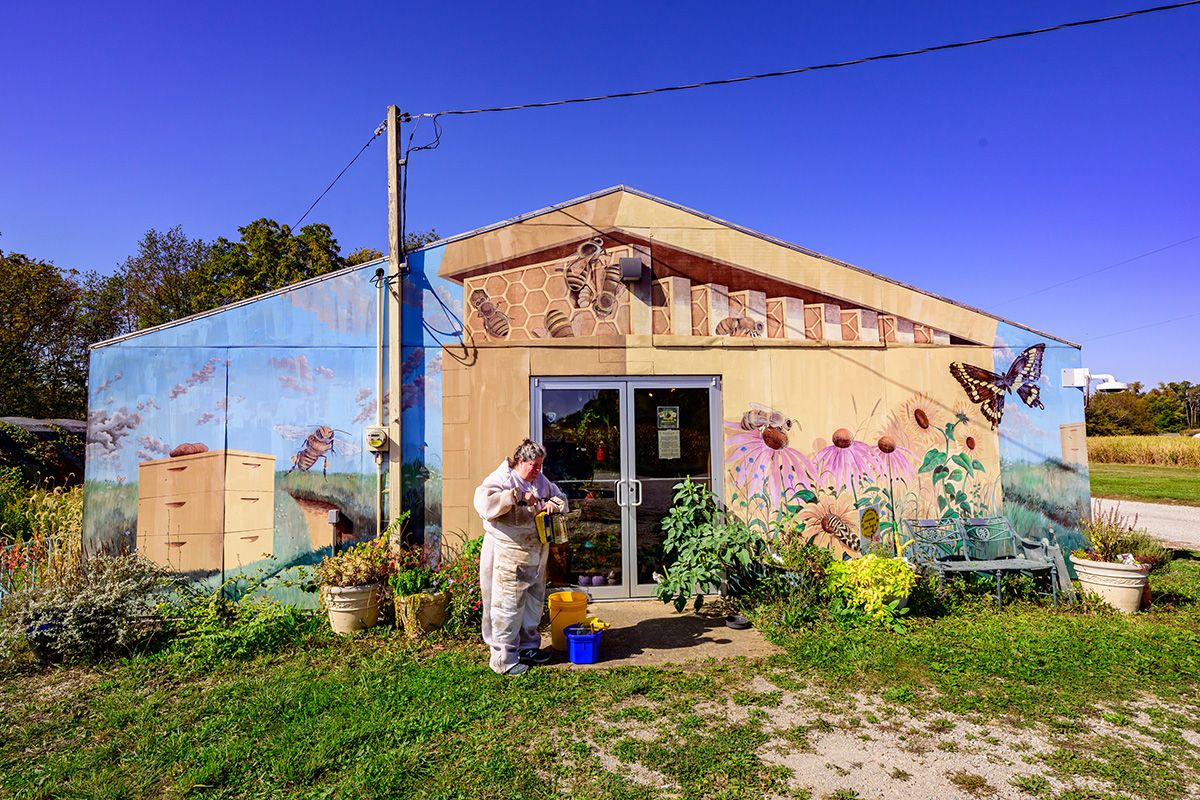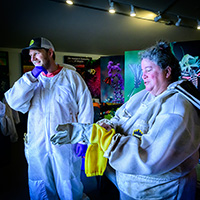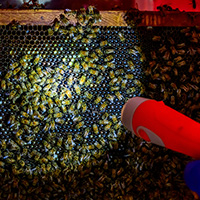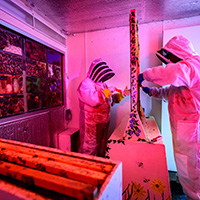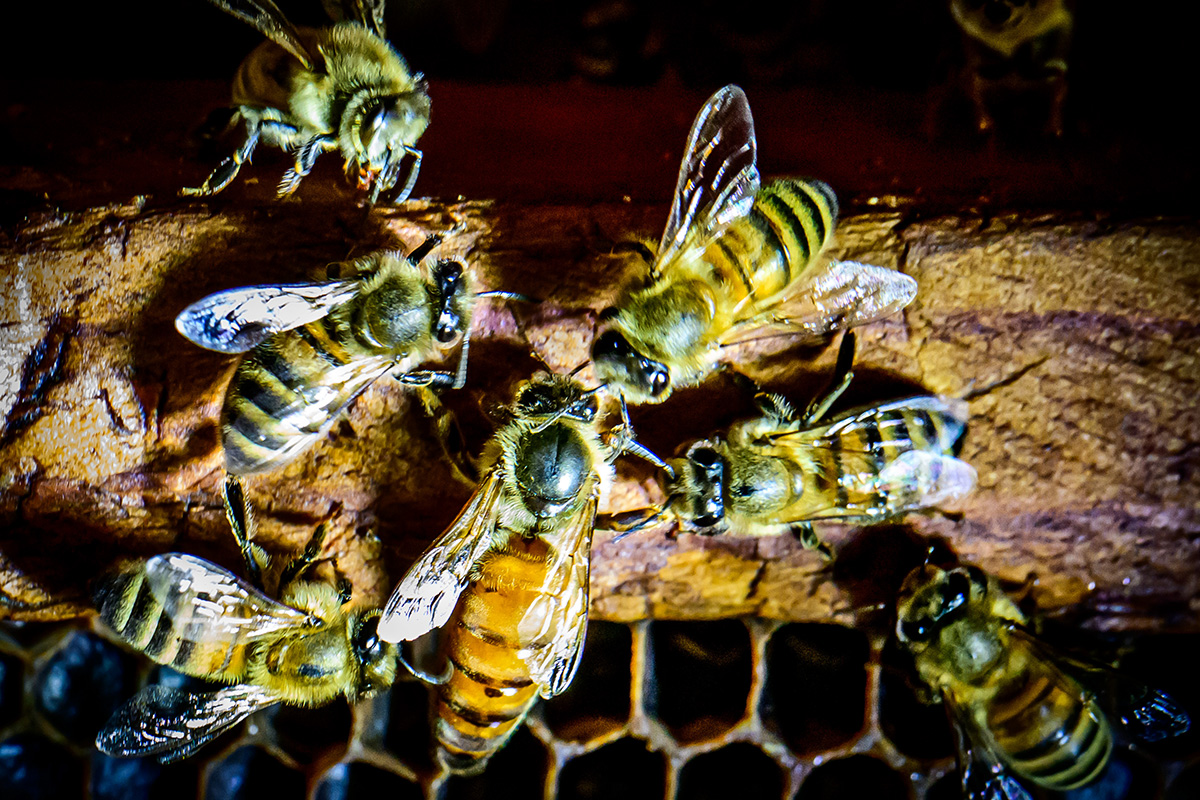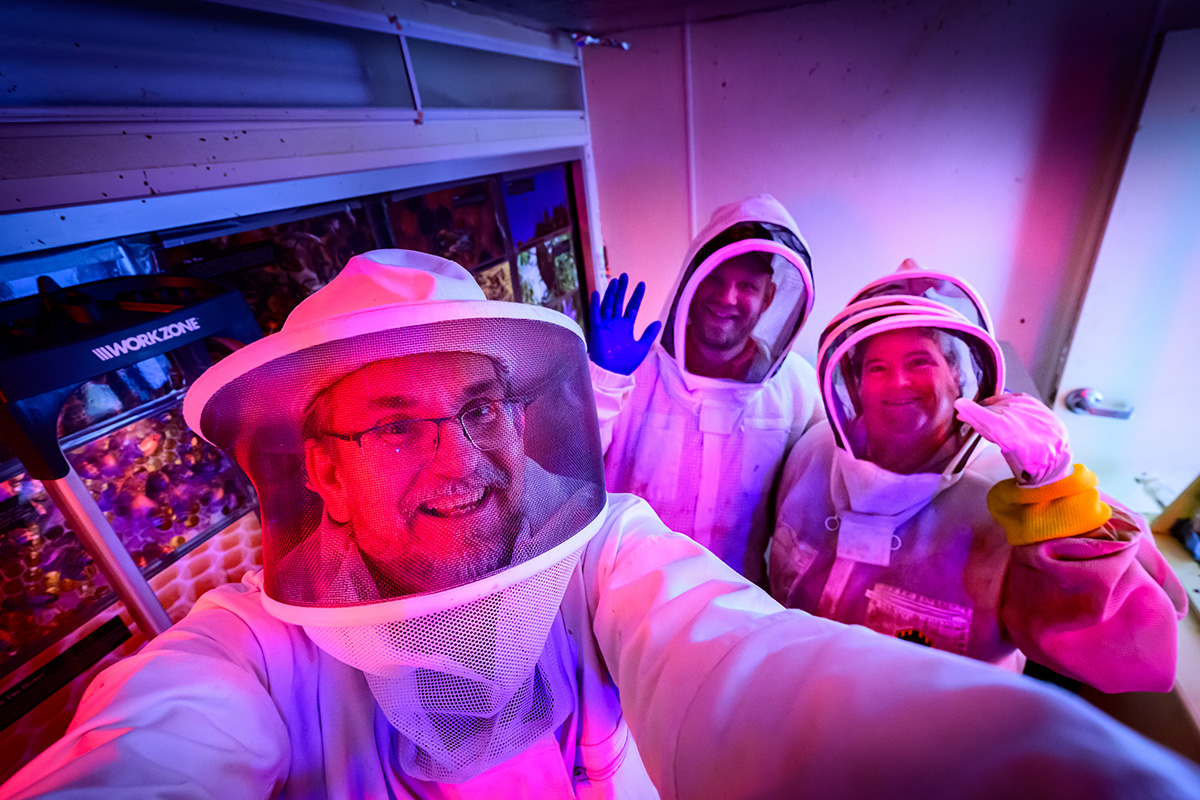University of Illinois Urbana-Champaign
By: Lesley Deem | Program Manager, Entomology Department Pollinatarium
Putting the bee girls to bed | Illinois
CHAMPAIGN, Ill. – I like to encourage people of all ages to help pollinators, the insects, birds and mammals that help flowering plants reproduce. People are more willing to help if they have a chance to get to know their local pollinators. To that end, I like to invite people to visit the University of Illinois Urbana-Champaign
Pollinatarium to observe honey bees,
Apis mellifera, in action. The bees spend their summer lives behind glass at the Pollinatarium.
In the warmer months, small groups of visitors come in to see the bees. The hive is small, containing only eight deep honeycomb-laden frames, which are laid out in a single layer and sandwiched between sheets of glass so observers can find the queen and see what all the worker girls are doing. They can also look for boy bees, called drones. There aren’t any drones in the hive this time of year, however; it’s fall, and the bees are gearing up for winter.
Each frame in the observation hive can hold about 2,000 bees. This summer, the hive was bursting with more than 12,000 bees. If the bees run out of space, they will swarm and leave the hive to look for a bigger home. We want to keep them here so that visitors can see them for as many months as possible, but we also want the colony to be healthy. When the bees are not being observed, we turn out the lights and cover the glass with foam to mimic the darkness inside a human-made hive or hollow tree.
The queen this year is named Zig Zag Zoey Walker because when we turn the lights on, she walks in a zigzag pattern to find a hiding place. She has gotten used to the abrupt changes in light, however, and now will lay eggs with people watching.
Zoey is a great egg layer — so much so that twice this summer we had to adjust the hive to make room for more honey. The queen had filled every cell in the honeycomb with brood — eggs, larvae and pupae — leaving no room for honey. To reduce the number of bees in the hive, we removed the outer layer of glass, took out several frames of brood and replaced them with honey-filled comb. But by the end of summer, the hive had consumed all its honey.
The glass-walled frames allow us to see everything going on, but this artificial setup limits what the bees can do to regulate the hive. In a natural hive, the bees place the combs side by side and fill the spaces between with live bees. When it is cold, they cluster in a ball and vibrate their flight muscles, shivering to generate heat. They must eat honey to have the energy to do this.
But the observation hive ran out of honey, and, in response, the queen quit laying eggs destined to become winter workers. If a hive is weakened by a lack of food, pests will move in. These include small hive beetles and the lesser wax moth. In our observation hive, one sign of stress is when the workers start to neglect their duties, failing to remove dead summer worker bees, for example.
To help them, we put the girls to bed. This means taking them out of the observation hive and putting them into a minihive where they can cluster together to stay warm during the winter months. Because the small number of bees may not have enough mass to keep them warm during the winter, we’re keeping the minihive indoors inside the temperature-controlled Pollinatarium. There is a pipe in the wall that allows them to go outside.
When we have finished, I feel great relief that the bees are tucked in and warm, with enough honey to get them through the winter. I do love the golden, stripey furry girls. They are fascinating to watch, learn about and share with other people.
Editor’s notes:
The Pollinatarium is the first freestanding science center in the nation devoted to flowering plants and their pollinators.
Subscribe to Behind the Scenes for short blog posts, photos and videos from Illinois faculty, researchers, students and staff about their work and lives. Send an email with “SUBSCRIBE BTS” in the subject line.




